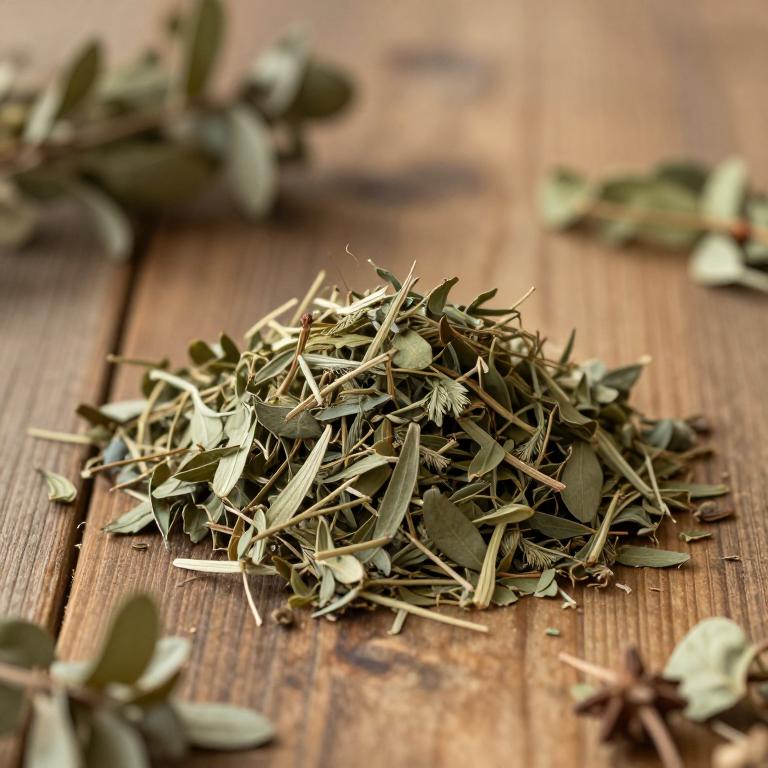Candle Bush (Cassia Alata)
Information Reliability Score: 5/10
This score reflects the overall reliability of the information presented in this article. It is based on the quality of scientific evidence, accuracy of sources, and the transparency of references related to Cassia alata.

Cassia Tree, scientifically known as cassia alata, is a medicinal herb native to tropical regions, valued for its therapeutic properties and adaptogenic qualities.
It is commonly used in traditional medicine for its ability to support digestive health, reduce inflammation, and enhance overall vitality. The tree's bark and leaves contain compounds like flavonoids and tannins, which contribute to its anti-inflammatory and antioxidant effects. Historically, it has been utilized in Caribbean and African cultures to treat ailments such as fever, diarrhea, and skin conditions, while modern wellness applications include its use in herbal supplements and natural remedies for stress and immune support.
Its distinctive yellow flowers and unique, aromatic flavor also make it a notable spice in culinary traditions.
FREE CHECKLIST
The Only 10 Herbs You Need to Heal 90% of Common Ailments.

Table of Contents
Scientific and Botanical Profile
Cassia Tree, with botanical name cassia alata, is a deciduous shrub or small tree belonging to the Fabaceae family, known for its striking yellow flowers and aromatic properties.
Native to Tropical Africa, Southern Asia, Madagascar, Indonesia, the Philippines, Seychelles, Sri Lanka, and the Maldives, it is commonly referred to as Golden Shower Tree, Golden Trumpet, Cinnamon Tree, Senna Alata, Cassia Alata, Ceylon Cinnamon, Mexican Butterfly Bush, Yellow Cane Plant, Candle Bush, Mexican Cinnamon, Mexican Cassia, Mexican Butterfly Tree, Yellow Cassia, and Golden Cane. Morphologically, it features a slender trunk with smooth, greyish bark, opposite leaves that are ovate to lanceolate in shape, and clusters of bright yellow, tubular flowers that bloom in summer. The tree produces small, flat pods containing several seeds, and its leaves and flowers have been traditionally used in herbal medicine and as a source of natural dyes.
Due to its ornamental value and ecological benefits, it is widely cultivated in tropical and subtropical regions around the world.
History and Cultural Relevance
Cassia Tree was used in traditional medicine systems across various cultures for centuries, particularly in Africa, the Middle East, and parts of Asia, where its bark and leaves were valued for their medicinal properties.
The tree has a long history of use in Ayurveda and traditional Chinese medicine, where it was employed to treat ailments such as skin conditions, digestive issues, and inflammation. In many African cultures, the Cassia Tree holds symbolic significance, often featured in rituals and ceremonies to promote fertility, protection, and spiritual connection. Its leaves and bark have been traditionally used to make poultices for treating wounds and as a natural remedy for fever and headaches, practices that still influence modern herbal medicine.
Today, the Cassia Tree remains culturally relevant, with its natural compounds being studied for potential pharmaceutical applications, bridging ancient wisdom with contemporary science.
Chemical Composition and Nutritional Profile
Cassia Tree contains a variety of bioactive compounds, including alkaloids, flavonoids, essential oils, and terpenes, which contribute to its medicinal properties.
It is also rich in nutrients such as vitamin C, vitamin A, and various minerals like calcium, magnesium, and potassium, making it a valuable source of essential nutrients. The presence of antioxidants, particularly flavonoids and phenolic compounds, helps neutralize free radicals and reduce oxidative stress in the body. These active compounds work synergistically to support immune function, reduce inflammation, and promote overall health by modulating cellular processes and enzyme activities.
The combination of its chemical composition and nutritional profile makes Cassia Tree a promising candidate for traditional and modern therapeutic applications.
Medicinal Properties and Health Benefits
Cassia alata has been widely recognized for its potent medicinal properties and diverse health benefits, particularly in supporting the digestive, respiratory, and immune systems.
It contains compounds such as flavonoids and alkaloids that exhibit anti-inflammatory, antimicrobial, and antioxidant effects, making it useful in treating ailments like gastritis, bronchitis, and skin infections. Compared to similar herbs like Cassia auriculata or Cinnamomum zeylanicum, cassia alata offers a more robust profile of bioactive compounds, with higher potency in its anti-inflammatory and antifungal activities. Its ability to improve digestion and reduce intestinal inflammation sets it apart, as it also promotes the healing of ulcers and supports gut health more effectively than many other traditional herbs.
Overall, cassia alata stands out as a versatile and powerful plant with broad therapeutic applications across multiple body systems.
Discover the 10 best health benefits of Candle Bush.
Forms, Preparation and Usage
Cassia alata has a wide range of forms, including fresh leaves, dried tincture, powder, essential oil, and capsule, allowing for versatile preparation and application.
It can be prepared as a tea by steeping dried leaves in hot water, or as a decoction by boiling the plant material for a longer period, which extracts more active compounds. Topical preparations such as poultices or salves made from crushed leaves are commonly used for skin conditions, while essential oil may be diluted and applied externally for its aromatic and therapeutic properties. For adults, a typical dosage is 1-2 cups of tea daily, while children should only use it under medical supervision, with a reduced dose if safe.
Usage should be short-term and conservative, typically no longer than 2 weeks, to avoid potential side effects and ensure safety.
Safety, Side Effects and Contraindications
Cassia alata can be used in traditional medicine for its potential anti-inflammatory, antimicrobial, and antidiabetic properties, but it must be used with caution due to its potential side effects and interactions.
It may cause gastrointestinal discomfort, such as nausea, vomiting, and diarrhea, and in some cases, it can lead to liver toxicity or allergic reactions. Individuals taking medications for diabetes, blood pressure, or anticoagulants should consult a healthcare provider, as cassia alata may interact with these drugs and alter their effects. During pregnancy and breastfeeding, cassia alata is contraindicated due to limited safety data and potential risks to fetal or infant development.
To ensure safe use, it is recommended to consult a qualified healthcare professional before use, start with a low dose, and monitor for adverse reactions.
Growing, Harvesting and Storage
Cassia alata grows in warm, tropical climates with well-drained, loamy soil that is rich in organic matter and slightly acidic to neutral in pH.
It thrives in full sun to partial shade and requires regular watering, especially during dry periods, but it should not be overwatered to avoid root rot. Regular pruning and fertilization with a balanced fertilizer during the growing season promote healthy growth and abundant leaf production. The leaves are typically harvested when they are fully developed, usually during the rainy season, by carefully plucking them to avoid damaging the plant.
To preserve its potency, the harvested leaves should be dried in a cool, shaded area with good air circulation and stored in airtight containers away from light and moisture.